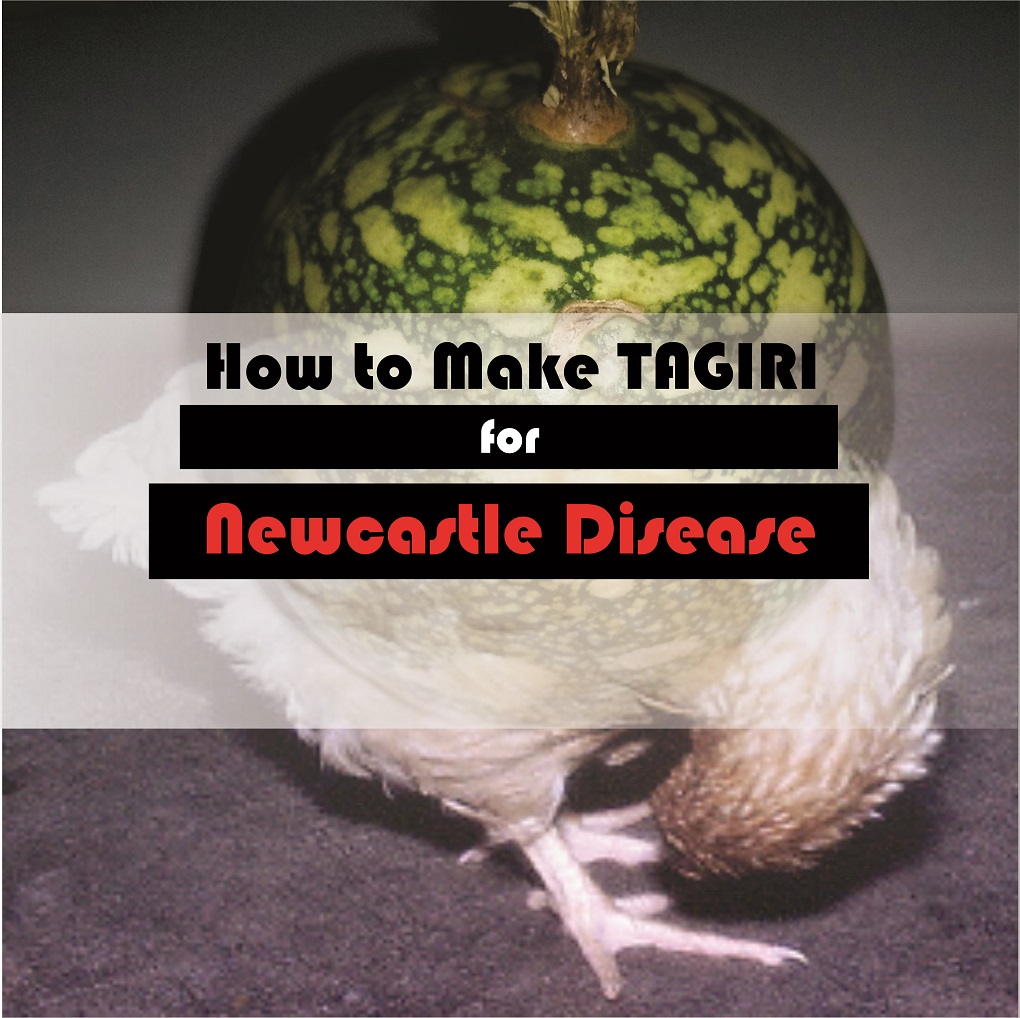
How to make Tagiri (Christmas Melon) has become a popular question since farmers started discovering the extent of its power in combating poultry diseases like Newcastle, Mareks, and other viral diseases. Therefore, I deem it fit to share with you in pictorial detail how to make this strong remedy from tagiri bulb. The pictures in this article were taken by me during the test preparation of tagiri super, so you can be sure that this is not something I just came up with without my practical involvement in its use. From using this tagiri plant, I can say that it’s one of the most effective herbs a farmer can get.
- Advertisement -
Now, let’s me show you how to make your Tagiri – how you can turn this bulb called Christmas melon into a super powerful organic treatment for various diseases.
- Advertisement -
Please note that all your bulbs from tagiri plant must be in good condition. You don’t make organic preparations with bad ingredients, especially when you have to ferment it first.
Table of Contents
Peel Your Tagiri Bulb

One of the first steps to make tagiri is to peel the back of the bulb. As you can see in the above picture, I used a kitchen knife to peel off the back. As someone who wants to know how to make tagiri, I must tell you that this is the most difficult part of the entire process. Of course, we will soon get to the awful part where you see how bad the Tagiri water smells.
Cut the Tagiri into Pieces

Now is the time to cut the peeled tagiri bulb into pieces to expose the inner part and aid fermentation. This step is pretty easy and you can just cut a full bulb into 4 pieces.
The next phase is fermentation. Because it is important to know the weight of the tagiri you want to ferment, you will have to take the weight using a scale.

People that want to know how to make tagiri (Christmas melon) must know the volume of water to add for good fermentation, and to determine the right dosage of tagiri super later in use. For a perfect measurement, you will need to put the empty container on the scale first and then ZERO your scale. By doing this, you will be sure that the weight you will get will be for tagiri alone. In my own case, I had approximately 1kg of tagiri cuts.
After measuring the tagiri cuts, the next thing is to add water that is twice the weight of the bulbs. That is, if you have 1kg of tagiri like mine, you use 2 litters of clean water.
Fermentation of Tagiri

In the process of making this wonderful remedy, fermentation is a crucial part which also takes a good amount of time. After you have poured water into the container with the Christmas melon cuts, you are ready to ferment. Now get your cheese cloth and a rubber band to cover the container. Again, do not allow any foreign agent like dirt to enter the container as this will contaminate the process.
N/B: Once you notice growth of any black or green substance in the bucket, you must discontinue the process and start again with better hygiene.
Length of Fermentation
Fermentation of Christmas melon should be done for 7 days. Unlike some other preparations like Apple Cider Vinegar (ACV), you don’t have to turn the mixture. Just leave it for 7 days.
Condition of the Fermentation Room
Fermentation must be done in a cool dark room. This is one of the simple rules you will have to adhere to if you want a successful fermentation process without any strange growth.
Let me warn you: Tagiri extract smells very bad and you might want to use gloves too.
After the completion of the fermentation on day 7, you can collect the water in a different container. That’s not all yet, you will have to blend what is left and then use a cheese cloth to drain the liquid. You can add some of the tagiri water while blending. After all these, add the water together and you have your tagiri ready.

CLICK HERE for details about preservation and administration of tagiri super
The process is easy, but the power of this herb is magnificent. With tagiri, you can confidently say goodbye to vaccines. Yes, I said it!
Kindly share this post with others on your connection.
Have you read: Your Complete Guide to Organic Poultry Farming?
